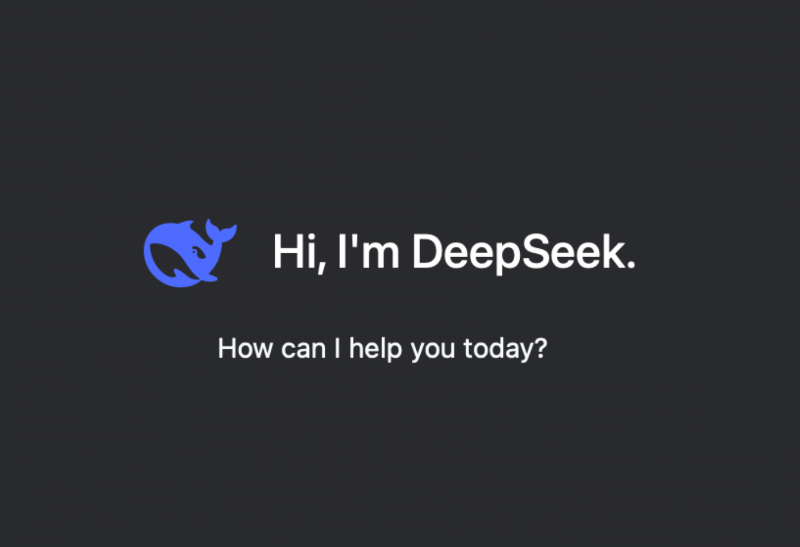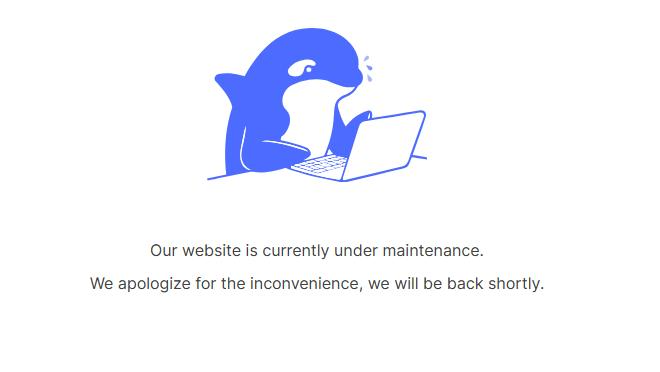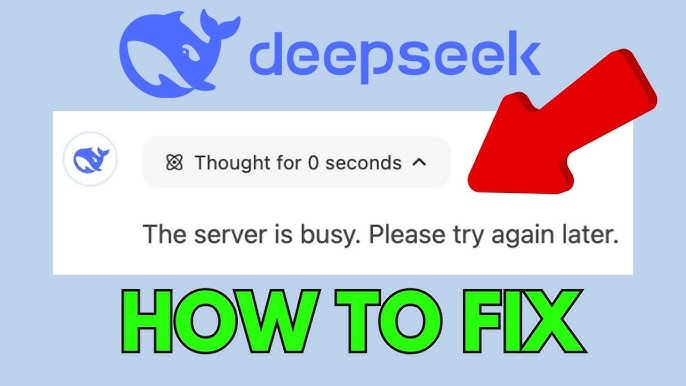
Are you experiencing issues with DeepSeek right now? Wondering if the platform is down or if there’s a problem on your end? Don’t worry, you’re not alone. Service interruptions can be frustrating, but with a few simple steps, you can quickly identify the issue and take appropriate action.
This guide will walk you through how to check DeepSeek’s real-time status, troubleshoot potential issues, and ensure minimal disruption to your workflow.

Before assuming service downtime, follow these steps to verify if DeepSeek is really experiencing interruptions:
Start by verifying if DeepSeek is experiencing known issues or outages. Official sources are often the most reliable for getting accurate updates.
Visit DeepSeek’s Official Status Page (if available): Many companies have dedicated status pages that provide real-time insights into their systems. You’ll find details about server performance, ongoing maintenance, or any outages affecting their service. Monitoring this page ensures you're immediately aware of any official announcements or updates.
Check Social Media Channels: Social platforms like Twitter and Discord are commonly used for communicating with users during service interruptions. DeepSeek might share updates, timelines for resolving problems, or temporary solutions here. On Twitter, search their official account for recent posts, and on Discord, explore their community announcements or support threads.
If you don’t find updates on official channels, third-party platforms can be an excellent resource for identifying widespread issues.
Use Sites Like DownDetector: Platforms like DownDetector compile user-submitted reports of outages in real time. By visiting such sites, you can check if others are experiencing similar issues with DeepSeek. These sites often display graphs that show patterns or spikes in reported problems, making it easy to spot large-scale disruptions.
Look for Broader Patterns: If you notice a surge in complaints over a short period, it’s likely a widespread issue rather than something isolated to your account or setup. These patterns help confirm whether the problem lies with DeepSeek’s service or elsewhere.
Sometimes the issue may not be with DeepSeek itself but rather with your local network or setup. Running a few diagnostic checks can help rule out these possibilities.
Check Your Internet Connection: A weak or unstable internet connection could prevent DeepSeek from functioning properly. Use an internet speed test tool to ensure your network is performing as expected. If your internet speed is unusually slow or inconsistent, the problem may be coming from your network provider.
Restart Your Modem/Router: A quick modem or router reboot often resolves connectivity issues. After restarting your equipment, try accessing DeepSeek again to see if the issue persists. Additionally, test other websites or online tools to confirm that your internet connection is working as it should.
Tweak Your Browser Settings: Sometimes, browser-related issues can affect how DeepSeek loads. Clear your browser’s cache and cookies to remove any outdated or corrupted data that might interfere with its functioning. If that doesn’t work, switch to a different browser to see if the problem continues. Your browser’s extensions or settings could also be causing conflicts.
Also Read: How Many Images Can You Upload to DeepSeek? >>

Understanding the common causes of service interruptions can help you anticipate potential issues and respond more effectively when the platform becomes unavailable. Below are some of the most frequent reasons for DeepSeek downtime, along with detailed explanations to provide more context.
Maintaining robust infrastructure is critical for ensuring optimal platform performance, and this often involves planned maintenance activities.
Scheduled Updates and System Improvements: To keep the platform running smoothly, DeepSeek may perform scheduled updates to introduce new features, improve security, or enhance overall functionality. These updates are typically part of a larger strategy to stay competitive and reliable.
Routine Server Maintenance: Servers require periodic maintenance to avoid degradation in performance. This can include tasks like upgrading hardware, optimizing software, or clearing outdated processes. These activities ensure that the platform remains fast and efficient for all users.
Advance Notifications Through Official Channels: When maintenance is planned, DeepSeek usually announces it ahead of time via official status pages or social media platforms. This gives users an opportunity to prepare for brief periods of unavailability.
Not all downtime is planned. Sometimes, unforeseen technical problems can disrupt accessibility.
Sudden Server Overloads: With a surge in user activity, such as during peak hours or special events, servers may experience strain, leading to temporary outages. This is especially common for platforms that process large amounts of data or handle real-time interactions.
Potential Cybersecurity Incidents: Occasionally, unexpected downtime may result from cybersecurity threats, such as attempts to breach the system or distributed denial-of-service (DDoS) attacks. While rare, these incidents can require immediate mitigation efforts to protect the platform and its users.
Backend Infrastructure Challenges: Hidden technical issues, such as bugs in the software code or database errors, might cause interruptions. These are usually identified and resolved quickly by DeepSeek’s technical teams.
Sometimes, connectivity issues stem from external factors unrelated to DeepSeek’s infrastructure.
Localized Internet Service Provider (ISP) Issues: Users in specific regions may face trouble accessing the platform due to problems with their local ISPs. This can range from temporary outages to bandwidth throttling in certain geographic areas.
Geographic Network Disruptions: Factors like severe weather conditions or natural disasters can damage network cables or disrupt data centers in specific locations, leading to connectivity challenges.
Geopolitical or Infrastructure-Related Constraints: Occasionally, regional restrictions or geopolitical disruptions might interfere with internet access, impacting users’ ability to connect to DeepSeek. These are complex issues that can take longer to resolve and may require regional workarounds.

If you’ve confirmed a service disruption, take these steps to manage the situation:
Temporary service disruptions are a normal part of maintaining cloud-based platforms, like DeepSeek. These interruptions can result from routine maintenance, unexpected technical challenges, or even regional internet issues. Staying calm allows you to assess the situation methodically and often leads to a quicker resolution.
Remember, most downtime is short-lived, and companies usually work swiftly to restore services when issues arise.
If you suspect there’s a service interruption, it’s essential to confirm the issue by cross-referencing reliable sources.
Check DeepSeek’s Communication Channels: Start by visiting DeepSeek’s official status page or social media accounts like Twitter or Discord for real-time updates. This is often the fastest way to confirm if they’ve acknowledged the issue.
Look at Third-Party Platforms: If there’s no official confirmation yet, turn to third-party status websites like DownDetector for user-reported outages. These platforms often highlight patterns or spikes that indicate a broader issue.
Consult Community Discussions: If available, forums or community threads related to DeepSeek may shed light on what’s happening and offer temporary workarounds shared by other users in real-time.
Gathering information from multiple sources helps ensure you have an accurate understanding of the situation.
Sometimes the issue might not be with DeepSeek itself but rather with your own internet connection or device configuration. Perform these quick checks to rule out local problems:
Test Your Internet Connection: Run a speed test to verify your connection is stable and performing well. If the results show low speeds or erratic behavior, restarting your modem or contacting your internet service provider might help.
Clear Your Browser Data: Temporary data like cache and cookies can sometimes interfere with how platforms load. Clear your browser’s stored data or try switching to another browser to see if that resolves the problem.
Try Alternate Devices: If possible, attempt to access DeepSeek from another device, such as a smartphone or tablet, to determine if the issue is isolated to a specific system.
Eliminating local connectivity or device-related issues ensures you’re not overlooking a simple fix.
Patience is often key during service outages. Most interruptions, especially those caused by server overloads or small technical hiccups, are resolved quickly by the platform’s technical teams.
Retry in Short Intervals: If there’s no official communication yet, wait a few minutes before trying to access the platform again. Developers often identify problems promptly and work behind the scenes to minimize downtime.
Avoid Excessive Refreshing: Repeatedly refreshing DeepSeek or reconnecting could add load to their servers, potentially worsening the situation or delaying fixes.
By giving the system some time to recover, you can often avoid unnecessary frustration or action.
If the issue persists despite trying the steps above, it may be time to reach out to DeepSeek’s customer support team for assistance.
Use Official Channels: Look for their designated support email address, web form, or live chat system on their website to report your issue directly.
Include Relevant Details: When contacting support, provide essential information like error codes, the steps you’ve already taken, and any other relevant observations. This helps their team diagnose and address the issue more efficiently.
Check for Support Updates: While waiting for a response, keep monitoring DeepSeek’s status pages or social media accounts for any updates about the situation.
Also Read: How to Use DeepSeek AI to Supercharge Your Work >>

While you can’t prevent service interruptions entirely, you can prepare for them with these proactive measures:
If DeepSeek offers an offline mode, familiarize yourself with it in advance.
Q: How Long Do Outages Usually Last?
Most outages are resolved within 30 minutes to 2 hours, depending on the nature of the issue (e.g., maintenance vs. technical malfunction).
Q: Can I Get Compensation for Extended Downtime?
Refer to DeepSeek’s Service Level Agreement (SLA) to check if credits or compensation are available for disruptions that exceed the allowed threshold.
Q: What’s the Best Way to Prevent Work Loss During Downtime?
Dealing with platform downtime can be inconvenient, but with a clear process, it’s manageable. By staying informed, troubleshooting effectively, and maintaining backup strategies, you can minimize disruptions and keep your workflow intact.
Remember, preparation makes all the difference. Bookmark DeepSeek’s official status page and communication channels for easy reference during unexpected outages. By staying proactive and calm, you’ll be ready to adapt to any technical hiccup that comes your way.
Would you like to share your experiences or tips for managing downtime? Comment below and help fellow DeepSeek users! 😊
[Pro Tip]: Want to ensure seamless workflows? Explore backup platforms and tools today to stay ahead of unexpected disruptions.